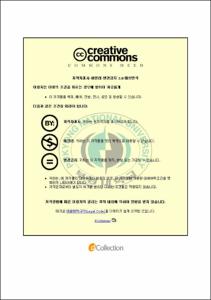近代 韓日船路에 관한 硏究
- Alternative Title
- A Study on the Modern Seaways between Korea and Japan
- Abstract
- Busan port had opened to Japan in 1876, Japan had established the seaway between Korea and Japan for the first time as a modern seaway in soon. After then there have been a lot of seaways operating in both countries until the present time. However, there is not much research focused on the administration of the modernized seaway yet. Korea-Japan routes have been a particular part and have a meaning weather it's positive or negative effort on both country for the process to Modernization.
Knowing the circumstance of operation of Korea-Japan's seaway is one way to understand the modernization in Korea and Japan. Therefore, this paper aims to discuss how the seaways operated between Korea and Japan from 1876 to 1945. For this research purpose, this article examines what is the modern seaway in terms of extended theory of the modern shipping industry. It will show how the traditional seaway could be parted from the modern one.
The shipping industry has been distinguished from marine transportation which had belonged to commerce in nineteenth century. The modernized sea-lane can be defined as stabilized shipping service with notice schedule, be operated by modernized ship, and advent of common carrier that they make a business of shipping service but not trade. On this view of the modernized seaway, the first modern seaway had been established by Mitsubish ㏇ in the end of 1876.
There were a couple of shipping agents established in the open-door period of Josun Dynasty such as Jeonunguk, Park's Kisunhoisa(Park's Steam Ship ㏇) and YIUNSA. Some of them had still managed a traditional system even though they used steam ships, but some were managed as a modernized shipping agent. At the same time none of those could not advance to operate to the seaway between Korea and Japan as a Korean capital side. This explains the modernization of shipping circumstances during the open-door period of Josun Dynasty. On the other hand, this article investigate some Japanese shippers that not only are major agents in Japan but also operate the agent of Korea-Japan route which is named well known Yubin Kisen Mitsubishi Kaisha(Mitsubishi Mail Steamship ㏇), Nippon Yusen Kaisha(NYK Line), Osaka Shosen Kaisha(O.S.K Line). These shippers' background of establishment and growth has shown the developmental process of Japanese shipping industry in modern Japan.
In order to study about the circumstance of the modern seaway between Korea and Japan, this paper first, investigates the convention between Korea and Japan. It has been found some provisions about navigation and fishery but no provision which concerns the seaway. But just before establishing the residency of Japan in Korea, Japanese ships could be navigated even inside of the Korean peninsula in 1905 according to 「The ship navigation convention」. This article divides two time period for the first, the open-door period of Josun Dynasty(1876~1910), the routes were mainly operated by before mentioned shippers and during the Japanese occupation(1910~1945), the main operator had changed to Josun Wosun(Josun Mail Ship ㏇), Osaka Shosen Kaisha(O.S.K Line), and Kanpu-Renrakusen(Connecting line). In particular, this paper makes the fact clear that fares on passengers and cargo, schedules, and the changing of fares and schedules has not been researched yet for the first sea-lane between Korea and Japan.
The sea-lanes were surprisingly improved in the colonial period but most of those were controlled by Japanese government. It has not caused normal trade with Japan. The operations of Korea-Japan seaways had taken advantage of this situation as a way to govern Korea and to push their way into China. It has shown the aims to establishing the Josun-wosun(Josun Mail ship ㏇) by the Japanese government.
For this reason, it is necessary to analyze the shipments and passengers in order to find the Japanese invasion policy toward China and the governing policy to Korea. But this paper discusses the administration of the seaways between Korea and Japan during the open-door period of Josun Dynasty and during the Japanese occupation. It also discusses what is the modernized seaway of Korean shipping infrastructure. This can be viewed as a part of developmental processes in modern nation.
- Issued Date
- 2007
- Awarded Date
- 2007. 8
- Type
- Dissertation
- Publisher
- 부경대학교 교육대학원
- Alternative Author(s)
- Roh, Jung-Ho
- Affiliation
- 부경대학교 교육대학원
- Department
- 교육대학원 역사교육전공
- Advisor
- 신명호
- Table Of Contents
- Ⅰ 序論 = 1
Ⅱ 本論 = 3
1. 近代 海運과 航路 = 4
2. 朝鮮의 近代 海運 = 21
가. 조선해운의 근대화 = 21
나. 조선의 근대 해운회사 = 27
(1) 轉運局 = 27
(2) 朴琪淙의 汽船會社 = 30
(3) 移運社 = 34
3. 日本의 근대 해운 = 39
가. 일본해운의 근대화 = 39
나. 일본의 근대 해운회사 = 48
(1) 郵便汽船三菱會社 = 49
(2) 日本郵船株式會社 = 55
(3) 大阪商船株式會社 = 58
4. 韓日航路의 운영 = 61
가. 근대 한일항로와 朝日條約 = 61
나. 開港期(1876~1910)의 한일항로 = 67
(1) 三菱会社의 朝鮮航路 = 67
(2) 日本郵船의 朝鮮航路 = 74
(3) 大阪商船의 朝鮮航路 = 78
다. 日帝强占期(1910~1945)의 한일항로 = 84
(1) 大阪商船의 朝鮮航路 = 84
(2) 朝鮮郵船의 일본항로 = 97
(3) 関釜連絡船 = 106
Ⅲ 결론 = 126
參考文獻 = 137
- Degree
- Master
- Files in This Item:
-
-
Download
 近代 韓日船路에 관한 硏究.pdf
기타 데이터 / 2.62 MB / Adobe PDF
近代 韓日船路에 관한 硏究.pdf
기타 데이터 / 2.62 MB / Adobe PDF
-
Items in Repository are protected by copyright, with all rights reserved, unless otherwise indicated.